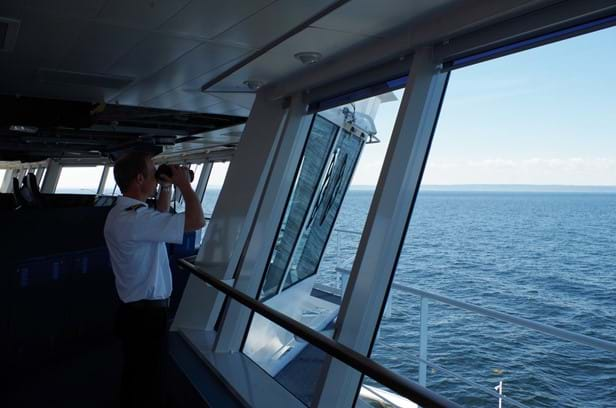
Quebec’s Matane–Baie-Comeau–Godbout ferry routes commit to whale conservation
Québec city, July 19, 2017 – The Société des traversiers du Québec (STQ), the province’s ferry operating agency, is pleased to be putting its Matane–Baie-Comeau–Godbout routes to further service by collaborating with the Réseau d’observation de mammifères marins (ROMM), a network for sharing observed marine mammal data, to collect information based on whale sightings en route.
All of the crew aboard the MV F.-A.-Gauthier received training on identifying whales and collecting data from ROMM’s experts during a Matane–Godbout crossing. In addition to the observations from aboard the ferry, a protocol has been developed specifically for the Godbout river station’s employees who regularly see marine mammals in the course of their work.
“As captains of the F.-A.-Gauthier ferry, my two colleagues and I are ready to observe marine mammals within the St. Lawrence Estuary during our crossings between Matane and Baie-Comeau and between Matane and Godbout,” confirmed Captain Léonard Michaud. “We are proud to contribute to improving the knowledge base and thereby helping to make decisions regarding the management of resources and the conservation of the biodiversity within the wonderful Saint Lawrence ecosystem.”
“The collaboration of the STQ’s Matane─Baie-Comeau─Godbout ferry service is a fabulous contribution to the project,” Esther Blier, ROMM’s executive director, emphasized. “The project has been expanding since the first Memorandum of Understanding reached with Groupe Desgagnés in May 2015. Since then, the CSL Group prepared one of its vessels, the Salarium, to collect observational data, followed by Green Marine announcing its commitment to facilitate networking among ship owners for the same purpose, as well as to develop specific tools to export the observational data collection model to other regions of North America.”
Green Marine, which counts the STQ among its founding members, is contributing to the project by helping to develop a program for observational training and data collection that is adaptive to different types of ship owners, each of which lives a distinct reality. “The beauty of this collaborative project between the conservation milieu and the maritime industry is being able to offer wonderful guides that are specific to each crew and adaptive to different environments to maximize observations and data collection,” explains Véronique Nolet, Green Marine’s program manager.
The data collected regarding approximately 700 sightings to date have been made available to the public through the St. Lawrence Global Observatory website at www.ogsl.ca/en. The project was made possible thanks to funding by the Government of Canada through its Habitat Stewardship Program (HSP) for species at risk.